Contents:
- Dissolve, wipe or cut?
- Effective Remover for Silicone Sealant
- How to remove silicone sealant from an enameled bath or tile?
- Removing the sealant from the plastic
- How to wipe the silicone from the clothes
- Prevention is better than dealing with the effects of
After repair or construction work, the question often arises: what is the use of removing the silicone sealant? After all, over time - in a few months - the traces of this material become dirty, giving an inaccurate look to the newly renovated room. In addition, a few years after application, it becomes necessary to remove the old sealant, as it eventually breaks down and begins to flow through the water.

Dissolve, wipe or cut?
Universal tool for dissolving silicone, which can be used on any surfaces, has not yet been invented, so most often you have to use combined methods:
- soften( dissolve);
- cut;
- scraping;
- to wipe;
- launder.
In order to remove the silicone by mechanical method, the following tools are required:
- scraper;
- spatula;
- sandpaper;
- abrasive composition;
- knife.
The most convenient way to work with silicone is a shoe knife, and as an abrasive compound, regular salt can be used. When mechanically removed, first cut a thick layer of silicone, and then apply an abrasive, and with the scraper the remaining sealant is wiped off. Silicone solvents can be used on some surfaces. After its application, it remains only to wash the remaining traces.
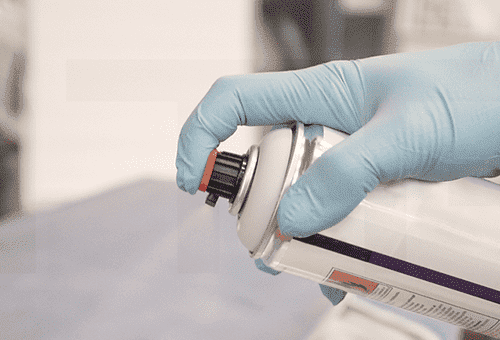
Effective remover for silicone sealant
There are different types of solvents for sealants in building shops, so the question inevitably arises: what is the purification of silicone? Which kind will be most effective? In order to acquire a suitable remedy, it is necessary to find out what type of sealant was used. They are one- and two-component. Two-component ones are mainly used in industrial conditions, therefore, the types of single-component silicone-based sealants will be considered here. They are subdivided according to the type of vulcanizing substance into acidic and neutral. Neutral, in turn, are:
- amine,
- amide,
- oxide,
- alcohol.
To soften the acid silicone, concentrated vinegar( 70% essence) can be used. Alcoholic sealants are dissolved by technical or medical alcohol. For other neutral silicones, acetone, white spirit or gasoline is suitable. On sale there are special solvents of sealants, for example Antisil, "Penta-840".They are suitable for silicones with any vulcanizing agent, so if it is necessary to remove the old layer of the sealant with an unknown composition, it is better to purchase such a tool.
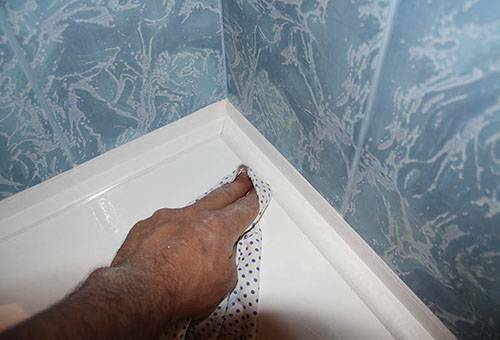
How to remove silicone sealant from an enameled bath or tile?
Removal of silicone sealant with enameled sanitary equipment, ceramic tiles or painted parts should be done with minimal use of mechanical methods and abrasive. To remove the silicone and not to damage the surface, you must perform the following steps.
- Remove thick layer or sagging with a sharp knife or blade, without touching the surface of the bath or tiles.
- Apply the solvent to the remaining sealant and leave for a few hours.
- After the silicone softens and looks like a consistency on the jelly, try to pick it up with a sharp object and take it off completely from the tile or bathroom.
- Clean or dry with a dry rag with silicone residue.
Sometimes the sealant is not removed by a whole stripe. This happens for various reasons: a softening agent or a low-quality silicone sealant is improperly selected. In this case, you need to once again treat the surface of the tile or bath with a cloth soaked in a solvent( you can try to pick another one).Processing should be done until the sealant begins to twist, and then remove the pellets with a dry rag.
Quite a laborious process - removal of silicone from tiles with a porous base, not covered with enamel. Unlike enameled tiles, here the coupling with silicone is much stronger. To remove it, you need to alternately apply a solvent to the tile and clean the softened seal with a scraper or pumice stone.
Advice
Use solvents only after checking for a small area of the tile surface. Especially it concerns the painted details.
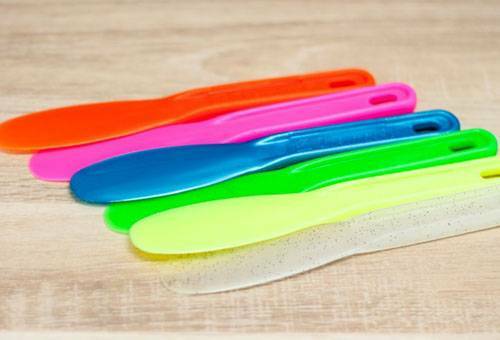
Sealant is convenient to remove with small plastic spatulas
Removal of sealant from plastic
It is easier to wipe the silicone from plastic, since its adhesion with this material is the weakest. Pipes, plastic shower cabins, acrylic bathtubs and pallets can be cleaned by first wetting the sealant with a solvent( 30-60 minutes).Remaining traces are washed off with any degreasing compound. However, such a simple process of removal of the old silicone is possible only if the primer is not used during application. Its application greatly complicates the task. Firstly, it's harder to choose the appropriate solvent, and secondly, you have to combine softening of the silicone and mechanical cleaning.
Dow Corning OS-2 has proven itself to remove the sealant from plastic surfaces. It does not damage the plastic, it is suitable for both acrylic surfaces and conventional plastic pipes.
Step-by-step instruction on how to wipe the sealant from the acrylic bath:
- the solvent is applied to the silicone and wait for its softening;
- use a plastic or wooden spatula to remove the remains of sealant and remove it;
- wipe the remaining residue with a rag and degrease the surface.
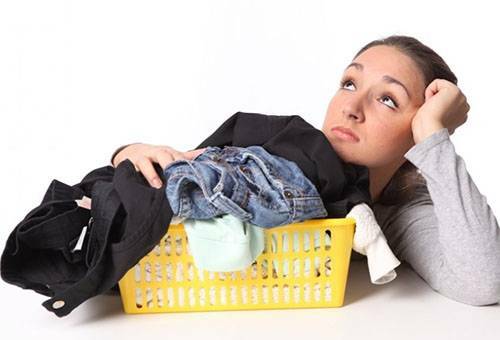
How to wipe the silicone from the clothes
If the sealant gets on the clothes, it should be immediately stretched at a high temperature. Uncured silicone is washed off easily enough. If time is lost, and silicone has time to polymerize, you will have to show patience. With work clothes, repair traces can be removed with compounds to dissolve the sealant - apply for 30-60 minutes, then wash the traces.
If the clothes are colored, and the appearance is important, the use of chemical solvents can ruin it. Then you can try mechanical cleaning.
- Tighten and secure the fabric on a flat surface.
- Gently remove contamination from clothing with a scraper or metal brush.
- Remaining trace wipe with a suitable solvent - acetic essence, white spirit, gasoline or alcohol.
- Immediately soak and wash clothes.
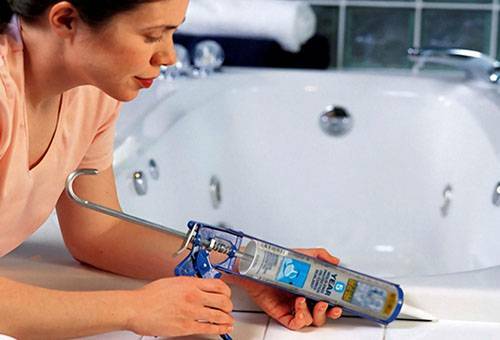
Prevention is better than dealing with the consequences of
When doing repairs, it is always best to clean the sealant stains with tiles or baths immediately. Uncured silicone is removed by hand without additional funds. Even after a few days, it is much easier to clean up the contamination than leaving the process for later. Another measure of prevention is to leave a record of which sealant was used in the bathroom or another room. This information is useful when you have to remove the old seal: the solvent can be picked up easily, and not by trial and error.



